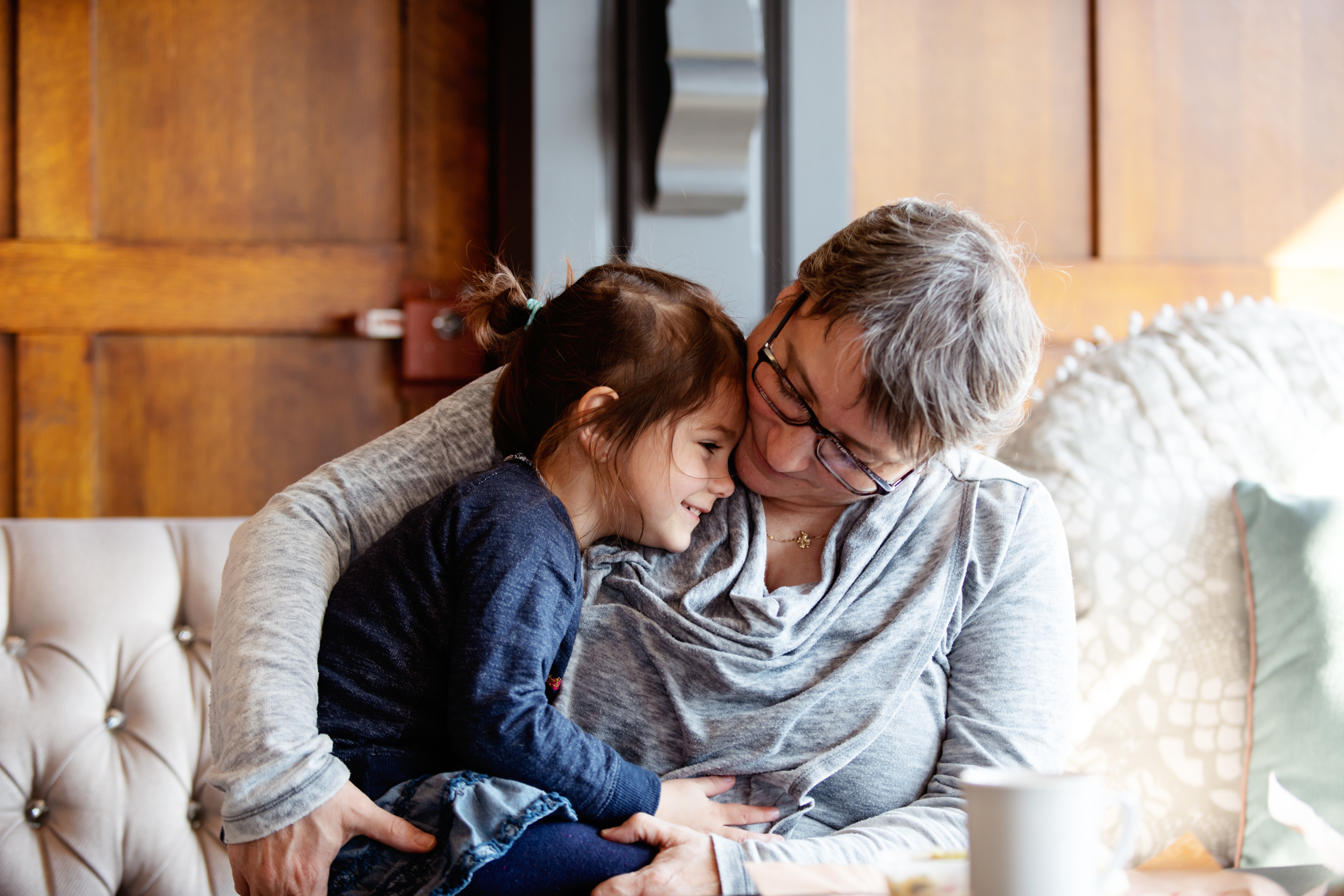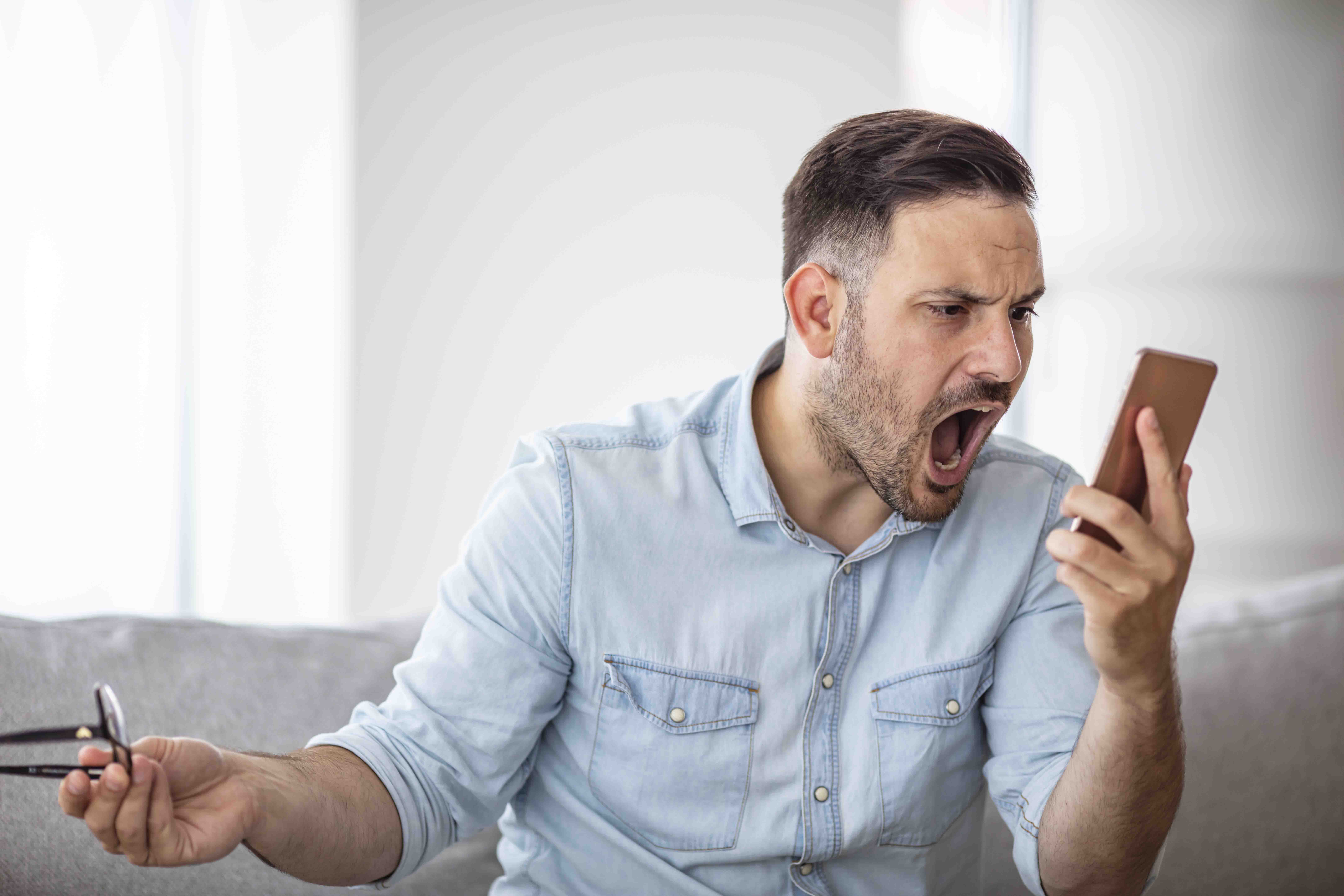Technology Helps Seniors Remain at Home
A variety of gadgets help the elderly keep their independence and age in place.


Most of us want to remain at home as we get older, but safety and health issues and social isolation can interfere with that plan. A growing number of seniors are turning to state-of-the-art digital tools -- via smartphones, GPS, voice activation and sensors -- that enable them to stay put indefinitely.
With "aging in place" technology, you can discreetly keep tabs on Mom -- tracking her daily activities on a cellphone, tablet or computer, and getting notified by text or e-mail if something seems out of the ordinary. Gadgets and apps can remind seniors to take their medication and let others know if they don't. Besides telling time, smart watches can provide feedback on one's vitals, such as blood pressure, that can be relayed to professionals. These new products are affordable and easy to use.
By 2017, experts expect this market to reach $30 billion. "The aging-in-place technology field is exploding," says gerontologist Katy Fike, who co-founded San Francisco-based Aging 2.0 in 2012 to advise start-ups geared to boomers and seniors. In the past few years, her company has met with more than 1,000 entrepreneurs in seven countries.
From just $107.88 $24.99 for Kiplinger Personal Finance
Become a smarter, better informed investor. Subscribe from just $107.88 $24.99, plus get up to 4 Special Issues

Sign up for Kiplinger’s Free Newsletters
Profit and prosper with the best of expert advice on investing, taxes, retirement, personal finance and more - straight to your e-mail.
Profit and prosper with the best of expert advice - straight to your e-mail.
Chalk it up to longevity, millions of worried long-distance family caregivers and a looming shortage of professional home aides. About 10,000 boomers a day are turning 65, and close to half of women ages 75 and older live alone. Here are some of the products geared to helping older adults maintain their independence.
Safety and security systems. PERS, which is an acronym for Personal Emergency Response Systems, is familiar to many people. You push an emergency button on a key chain or from a cord around your neck or wrist. Then an operator assesses the situation and can dispatch help or notify family.
But these medical alert systems are changing. They used to work only at home with a base station connected to a landline. What's new is the introduction of m-PERS (the "m" stands for mobile), which works wherever you are -- on the golf course, out to lunch, in the garden or visiting the grandkids in another state.
Rita Labla, 79, of Yuba City, Cal., lives alone and drives, but she struggles with congestive heart failure and chronic obstructive pulmonary disease. She has also fallen. "When she's out of sight, you never know what's going on," says her daughter, Loretta Burke, 61, who lives three miles away.
Last July, Burke gave her mother a GreatCall Splash m-PERS. "We were all concerned she wouldn't use it. Instead, she has it with her all the time," Burke says. "It's like her bodyguard."
Labla agrees. "I feel much more secure with it," she says. Labla knows she can press it if she thinks someone shady is following her in the parking lot, she gets lost on the road or she has a problem at home.
By checking their smartphones, tablets or computers, Burke and her siblings can track their mother via GPS. You can order a GreatCall Splash at www.greatcall.com or by calling 800-650-5921 ($50 for purchase, $35 activation fee and monthly service starting at $20).
In the next few months, GreatCall plans to add a feature that summons help if it detects a fall -- even if you haven't pressed the button. Already, another go-anywhere medical alert system, Philips Lifeline's GoSafe (www.lifelinesys.com, 800-380-3111), offers a waterproof pendant with fall-detection capability -- for a one-time fee of $149 plus $55 a month. MobileHelp (www.mobilehelp.com, 800-989-9863) has a similar system ($37, plus $50 a month; fall detection is an extra $10 a month).
Sensors are another way to make sure Mom or Dad is safe at home. Several wireless sensors that are placed around the house where a parent goes daily -- perhaps the bed, the refrigerator, a favorite chair or the bathroom door -- can tip you off if they aren't triggered.
Sarah King, 83, lives in a basement apartment of her daughter Donita Kniffen's home in Dardenne Prairie, Mo. Still, sensors from Evermind (https://evermind.us, 855-677-7625) have come in handy.
Kniffen, 52, programmed Evermind so she receives a text the first time her mom's TV, microwave or reading lamp is turned on. She also gets an alert on her smartphone if none of the sensors has been triggered during periods of the day when her mother should be up and about. Instead of calling every morning to make sure her mother is okay, Kniffen goes on her smartphone to check the sensors. (The sensors come with
a one-time cost of $199, plus a $29 monthly fee.)
Michael Demoratz, 54, a social worker who lives in Tustin, Cal., chose a combination PERS/sensor system from BeClose (http://beclose.com, 866-574-1784) to keep tabs on his mother, who lives in Pennsylvania. He placed motion sensors in her living room, between the bathroom and bedroom, and on the cellar door, which was the site of two previous accidents.
Demoratz receives a daily e-mail. Green means his mom's activity is ordinary, yellow signifies out of the ordinary, and red is abnormal. If she were to press the panic button, Demoratz would get a text from the company. "My mother feels reassured because she knows I have been alerted," he says.
BeClose's ability to spot variations in behavior is the system's most valuable feature, Demoratz says. "If I have objective data, my mother can't just say she's fine when I call," he says. "I can tell her I notice she's not getting up or out much and is spending a lot of time in her chair. Then I can ask why she's so sedentary."
Every year, Demoratz takes a vacation to Europe. "This year, from my phone, iPad, desktop or anyone's computer, I will know exactly what is going on with my mom in real time -- whether she is sitting, in bed, in the bathroom or if she has left the house," he says. "Talk about peace of mind." (The system costs $499 for the equipment and $99 a month.)
Medication managers. Taking pills at the right time, often multiple times a day, is critical to your health. What if you forget? New products can provide reminders and let loved ones know whether you're on track.
Lively (www.mylively.com, 888-757-0711) has just come out with a safety watch that not only tells time but acts as a medication reminder and a medical alert system. You attach a sensor to the pill dispenser, and the senior gets a reminder on a smart watch she wears. Remote caregivers get a notice by smartphone or computer when the medications are taken or perhaps forgotten.
[page break]
The system also lets you push a button in an emergency. A pedometer feature counts your steps, thus giving you feedback on your activity level. Colleen Sturdivant, who lives in Piedmont, Cal., says her mother, Jane Kennedy, 76, likes the step-counting feature. Since her recent hip replacement, the step counter shows her that she’s getting stronger every day by increasing her steps. Sturdivant likes the feature that notifies her of her mother's whereabouts, which can be shared with her sister and two brothers through an online dashboard. (The system costs $50, plus $28 to $35 a month.)
A more low-tech system is Reminder Rosie (http://reminder-rosie.com, $130), a talking clock. You manually program it with your voice or a loved one's voice, for the day, week or sometime in the future (perhaps, "time for my afternoon pills").
Mike Gilman, 65, a retired New York state tax collector, takes eight pills a day at different times. "Rosie is the most fantastic thing," he says. Besides jogging his memory about his medication, Gilman uses the device to remind himself when to send birthday cards to family and friends.
If you want a free app for your smartphone or tablet, CareZone (www.carezone.com) centralizes information about your medication and other important information, such as doctor appointments. You can share this information with family members. You can set daily medication reminders that buzz your phone, followed up 10 minutes later if you forget.
Keeping in touch. You might be able to stay in your home, but you can get lonely. Technology can help you feel connected to friends and family -- and sometimes even to medical professionals.
With an interactive touch screen from grandCARE Systems (www.grandcare.com, 262-338-6147), you can look at a photo of a grandson's Halloween getup or a video replay of his baseball home run. You can listen to music, play word games, read the news or surf the Internet. No need to know how to use a computer.
Randall Schafer, 61, of Houston, Tex., uses his grandCARE system to Skype with his mother, 90. (She just pushes a button to videochat.) "My mom is in love with our dog, Daisy," Schafer says. Her "face lights up" when she sees the schnauzer, he says.
An added feature: The system can transmit health data, from glucose and blood pressure to weight and oxygen readings. For example, a blood pressure cuff with a wireless Bluetooth medical device will record and relay the readings to caregivers. (The system costs $699, plus $49 a month.)
Another system that offers social opportunities -- as well as care coordination, calendar sharing and health-data collection -- is Independa (www.independa.com, 800-815-7829). All the information is on your TV rather than on a special screen or computer.
You can be watching Downton Abbey on TV and up pops a screen saying your daughter wants to say goodnight. You can accept and videochat -- or not, if you're engrossed in the show. An adult child can go to the Independa caregiver portal via e-mail and send a message or upload photos to your TV screen.
One feature called "Life Stories" lets parents record their memories for their adult children. You or your parents can play the remembrances at any time and e-mail them to other family members. Independa also has introduced a mobile app for caregivers for the soon-to-be-released Apple Watch.
The system costs $799 to $1,399, depending on the size of a special LG smart TV embedded with Independa services. If you have your own TV with an HDMI connection, which is now commonly used, you can hook it up to an Independa AnyTV Companion box, which costs $399. Both systems charge $30 a month.
A unique social engagement tool is the GeriJoy virtual care companion (www.gerijoy.com, 855-437-4569), which costs $249 a month. Consider it pet therapy with a twist. A virtual "talking" dog or cat on a tablet screen interacts and converses with a loved one. Many people name their pet, which is operated around the clock by GeriJoy representatives who work remotely.
To start a conversation, you touch the dog on the tablet screen and talk. Your pet will "wake up" and start chatting. (Perhaps the pet will say, "Did you have a good sleep? You look fabulous today.") When you ask a question, your virtual companion responds immediately, even if it means the human helper has to look up an answer on the Internet ("How did the Red Sox do last night?" for example). Daily conversations and events are kept on a written log, which the family can access through a secure Web site.
Becky and Craig Jio bought GeriJoy for Craig's mother, Lucy, who has Alzheimer's disease and lives with them in Santa Clara, Cal. She doesn't like to leave her room. "GeriJoy is good company," Craig, 45, says. She especially loves a silly picture that Becky uploaded of a man with an ultra long nose and tongue. "When it pops up, she cracks up laughing," Becky says.
The Jios are convinced that GeriJoy has improved her mood. When the system was down for a week with hardware problems, Craig says, "my mother got depressed. Now that it's back, she's happier. That makes everyone happier."
Coming down the pike. In the future, a growing number of seniors will be connected remotely with service providers who will be able to detect changes in physical and mental health as well as mobility, says David Lindeman, director of the Center for Technology and Aging, a research group in Oakland, Cal. "We are in a new era of connected aging," Lindeman says. "We will be getting more and more information brought to us in a variety of ways so we can support our loved ones."
Look for more developments in the "smart home." Entrepreneurs are working on a carpet woven from optic fibers that analyze your gait and help predict if you may fall or are physically declining. Consumer-friendly devices will help long-distance caregivers, with the touch of a tablet or cellphone, to turn off Dad's stove if he forgets or to close the blinds.
Also on the horizon is the growth in "wearables," which includes smart jewelry and clothing with sensors and chips woven into fabric. The sensors will track movement, collect health data and transmit to a mobile device.
Don't like the look of today's PERS pendants, wristbands and key chains? Cuff Inc. (www.cuff.io) is introducing products, priced from $29 to $199, that look like elegant jewelry. The gadget, which is inserted in specially made bracelets and necklaces, sends notifications, tracks activity and acts as a safety device.
Sensogram Technologies, based in Plano, Tex., is working on SensoTRACK (www.sensotrack.com), a device that you wear on your ear. It captures oxygen saturation, respiration and heart rate as well as mood. The goal is to prevent or to catch a problem early.
We will be seeing more social and caregiving applications, too. Laurie Orlov, founder of Aging in Place Technology Watch (www.ageinplacetech.com), believes voice-activated robots might someday be good helpers and conversationalists. "It is inevitable that companion robots will learn, adjusting responses to become the companion we need, responding to our commentary and reminding us to take our medication so that we can remain independent," Orlov says.
Profit and prosper with the best of Kiplinger's advice on investing, taxes, retirement, personal finance and much more. Delivered daily. Enter your email in the box and click Sign Me Up.

-
 Will Soaring Health Care Premiums Tank Your Early Retirement?
Will Soaring Health Care Premiums Tank Your Early Retirement?If you're under 65 and want to retire soon, your plan may be derailed by skyrocketing ACA marketplace premiums. Here's what you can do.
-
 I'm feeling down since my grandkids left after the holidays.
I'm feeling down since my grandkids left after the holidays.We asked therapists for advice on how grandparents can handle the post-holiday blues.
-
 5 Golden Rules We (Re)learned in 2025 About Investing
5 Golden Rules We (Re)learned in 2025 About InvestingSome investing rules are timeless, and 2025 provided plenty of evidence demonstrating why they're useful. Here's a reminder of what we (re)learned.
-
 When Tech is Too Much
When Tech is Too MuchOur Kiplinger Retirement Report editor, David Crook, sounds off on the everyday annoyances of technology.
-
 457 Plan Contribution Limits for 2026
457 Plan Contribution Limits for 2026Retirement plans There are higher 457 plan contribution limits in 2026. That's good news for state and local government employees.
-
 Medicare Basics: 12 Things You Need to Know
Medicare Basics: 12 Things You Need to KnowMedicare There's Medicare Part A, Part B, Part D, Medigap plans, Medicare Advantage plans and so on. We sort out the confusion about signing up for Medicare — and much more.
-
 The Seven Worst Assets to Leave Your Kids or Grandkids
The Seven Worst Assets to Leave Your Kids or Grandkidsinheritance Leaving these assets to your loved ones may be more trouble than it’s worth. Here's how to avoid adding to their grief after you're gone.
-
 SEP IRA Contribution Limits for 2026
SEP IRA Contribution Limits for 2026SEP IRA A good option for small business owners, SEP IRAs allow individual annual contributions of as much as $70,000 in 2025, and up to $72,000 in 2026.
-
 Roth IRA Contribution Limits for 2026
Roth IRA Contribution Limits for 2026Roth IRAs Roth IRAs allow you to save for retirement with after-tax dollars while you're working, and then withdraw those contributions and earnings tax-free when you retire. Here's a look at 2026 limits and income-based phaseouts.
-
 SIMPLE IRA Contribution Limits for 2026
SIMPLE IRA Contribution Limits for 2026simple IRA For 2026, the SIMPLE IRA contribution limit rises to $17,000, with a $4,000 catch-up for those 50 and over, totaling $21,000.
-
 457 Contribution Limits for 2024
457 Contribution Limits for 2024retirement plans State and local government workers can contribute more to their 457 plans in 2024 than in 2023.